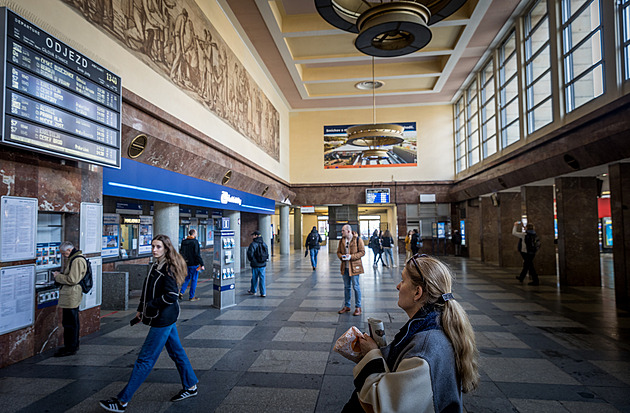European real estate appeal on the global market: expert insights from Motti Gruzman of Excelion
Historically, the US and European real estate markets have shown a close relationship, with trends in one often providing insights for the other. This has been particularly true with shifts like the rise of e-commerce and its impact on logistics and retail sectors. Read more: European real estate appeal on the global market: expert insights from Motti Gruzman of Excelion


Historically, the US and European real estate markets have shown a close relationship, with trends in one often providing insights for the other. This has been particularly true with shifts like the rise of e-commerce and its impact on logistics and retail sectors.
However, the current global economic environment — characterized by inflation, higher interest rates, and banking sector instability — complicates this approach. Here’s why applying US insights to Europe might be misleading:
- Europe has seen a swift repricing of capital values, while North American values have not yet adjusted significantly, despite weaker fundamentals.
- Europe has record-low vacancy rates, whereas US rates are about 2.6 times higher on average.
- Europe’s office space net absorption has been positive for the past seven quarters, while the US has experienced negative absorption since the pandemic began.
- Standard lease incentives in Europe average 10.3%, significantly lower than the US, where incentives can reach 30% of lease value, impacting net operating incomes.
- Europe is ahead in hotdesking and efficient space utilization, having adopted these practices before the pandemic, resulting in more efficient office use.
Rebased Values and Market Reactions
North American values do not reflect fundamentals yet
European real estate values have quickly adjusted to new economic conditions. Valuers have raised prime yields and discount rates to reflect interest rate increases, leading to a rapid reset of prices. Although dealmaking remains subdued, transactions are occurring close to book values, suggesting confidence in current valuations and enhancing market transparency.
In contrast, North American property values have been slower to adjust. For example, in the 12 months leading to March, North American property values fell by 2.4%, compared to a 13% decline in Continental Europe and a 22% drop in the UK. Although US office values decreased by 14.1%, this is less than the 16.5% decline seen in European offices. This slower adjustment in North America might suggest resilience, but the data does not fully support this view.
Investor Sentiment and Office Investment
Office investment is at a lower level in the US compared to Europe. Traditionally, office investments account for around 50% of commercial real estate activity in the US, but this dropped to 20% in Q1 2023. In contrast, Europe and Asia have maintained relatively stable office investment shares despite overall declines. This disparity reflects weaker investor sentiment in the US and skepticism about current valuations.
Fundamentals and Rental Growth
Vacancy Rates
Europe has the lowest office vacancy rates among major global regions at 7.6%, supporting potential rental growth. In comparison, major US markets like New York and San Francisco have seen significant increases in vacancy rates since the pandemic, with San Francisco’s rate soaring from 3% to over 30%. This raises concerns about the obsolescence of many US office properties, particularly high-rise towers that are harder to repurpose compared to Europe’s lower-rise buildings.
Rental Values
Despite challenges, prime rents in Europe — especially for sustainable and amenity-rich spaces — continue to show positive growth. JLL forecasts a 2.2% annual average rental growth for prime offices in Western Europe over the next five years. In contrast, US prime office markets are expected to see a modest 1.9% growth by 2027, with traditional forecasting models struggling to account for structural changes in office use.
Net Absorption
Europe’s net absorption of office space remains positive, with leasing activity surpassing new supply and space returning to the market. The US, however, is experiencing declining occupier demand and increased development, resulting in negative net absorption.
Lease Incentives
In Europe, average lease incentives are at 10.3% of lease value, up from 7% in 2019, with some cities like Paris La Défense seeing higher levels. In the US, incentives are significantly higher, reaching up to 30% in cities like Chicago. This disparity highlights stronger occupier bargaining power in the US and suggests that European markets are better positioned to increase net operating incomes despite rising financing costs.
Flexible Working and Office Utilization
European offices have long adopted hotdesking, resulting in more efficient use of space compared to the US, where fixed desks are more common. European offices are better utilized post-pandemic, with occupancy rates significantly higher than in the US. JLL data shows US office occupancy ranges from 40-60%, compared to 70-90% in Europe. This efficiency, coupled with a quicker return to office work in Europe, positions European markets favorably in managing long-term demand for office space.
A living example of profitable investment in European real estate
One of our clients recently invested in a property within our Pamporovo development and has been thrilled with the results. Nestled in the heart of the Rhodope Mountains, the apartment offers a stunning retreat surrounded by lush forests and alpine meadows. They now enjoy a vacation home that doubles as a smart investment. During the winter, the property provides a cozy base for skiing and snowboarding enthusiasts, while in the summer, it’s the perfect spot for hiking and nature exploration. When they’re not using the apartment, it generates rental income, thanks to Pamporovo’s appeal to both winter sports lovers and summer adventurers. This dual benefit has not only afforded them several vacations a year but has also enhanced the property’s value, making it a valuable asset in their investment portfolio.
Summary and Outlook
The US and European real estate markets differ significantly, with Europe’s substantial repricing, low vacancy rates, positive net absorption, and efficient office utilization suggesting a stronger position relative to the US. While Europe faces its own challenges, including potential further value corrections, its current fundamentals indicate it may outperform the US market over the medium term. North American real estate, burdened by financial instability, oversupply, and high valuations, faces a more challenging outlook.
Understanding these nuanced differences is crucial for investors and stakeholders in navigating the evolving global real estate landscape.
Read more:
European real estate appeal on the global market: expert insights from Motti Gruzman of Excelion
What's Your Reaction?



















































